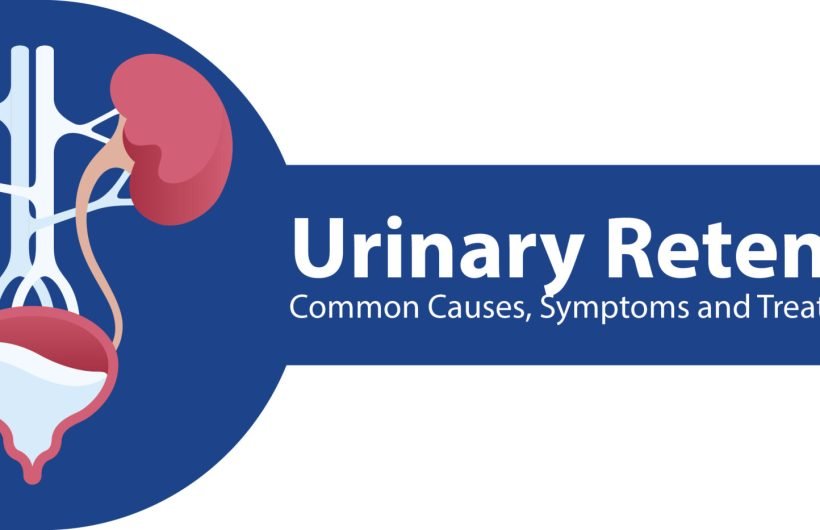Urinary retention refers to the inability to pass urine from the bladder. It can occur suddenly (acute urinary retention) or develop over time (chronic urinary retention). Both conditions require medical attention to prevent serious health complications. This article discusses the key causes, symptoms and treatment approaches for urinary retention.
What is Urinary Retention?
Urinary retention occurs when a person is unable to empty their bladder completely after urinating. In some cases of acute urinary retention, the bladder may become so full that urinating is impossible. The bladder’s main function is to store urine produced by the kidneys until it can be emptied during urination. Urinary retention develops when something blocks the normal flow of urine from the bladder out of the body. There are two main types of urinary retention:
Acute Urinary Retention : This refers to a sudden inability to pass any urine from the bladder. It requires immediate medical treatment to relieve the bladder and prevent complications. Left untreated, it can cause bladder damage or kidney problems.
Chronic Urinary Retention: This develops over time when a person has difficulty fully emptying their bladder on a regular basis. They may pass some urine but still have significant amounts left in the bladder after urinating. it is less of a medical emergency but still needs to be evaluated and treated by a doctor.
Symptoms of Urinary Retention
The symptoms depend on whether it is acute or chronic:
Acute Urinary Retention Symptoms:
- Sudden and complete inability to pass urine
- Severe pain or discomfort in the lower abdomen and bladder area
- Feeling of bladder fullness
- Swelling or tenderness over the bladder
Chronic Urinary Retention Symptoms:
- Frequent urination of small amounts of urine
- Urgency to urinate but inability to pass urine fully
- Weak urine stream
- Dribbling of urine after urinating
- Feeling of incomplete bladder emptying
- Recurrent urinary tract infections
Causes of Urinary Retention
There are several underlying causes in men and women:
- Benign Prostatic Hyperplasia (BPH): Enlargement of the prostate gland is the most common cause of urinary retention in older men. It squeezes the urethra and obstructs urine flow.
- Pelvic Organ Prolapse: In women, pelvic organ prolapse like cystocele (bladder falling into the vagina) or rectocele (rectum falling into the vagina) can cause the bladder to be pushed down and compress the urethra, blocking urine flow.
- Urethral Stricture: Narrowing or scarring of the urethra caused by conditions like infection, trauma from instruments used in surgery or radiation therapy used to treat prostate cancer. This squeezes the channel where urine exits the body
- Urinary Stones: Kidney stones or bladder stones get stuck in the urethra and prevent urination.
- Neurological Disorders: Conditions affecting the nerves involved in bladder control like multiple sclerosis, spinal cord injuries, diabetes or stroke can disrupt signals between the brain and bladder
- Infections: Bacterial prostatitis or interstitial cystitis cause swelling around the urethra and obstruct urine flow.
- Medications: Certain drugs like antihistamines, decongestants and muscle relaxants can cause urinary retention as a side effect.
- Pelvic Surgery: Procedures involving the prostate, bladder or pelvic area may damage nerves and cause temporary or long-term retention.
Diagnosis of Urinary Retention
To diagnose the underlying cause, doctors perform the following tests:
Physical exam focusing on the abdomen and genitals
- Urinalysis to check for infections
- Ultrasound of the bladder to measure residual urine volume
- CT scan or MRI of the pelvis to identify anatomical abnormalities
- Cystoscopy to visualise the urethra and bladder lining
- Urodynamic testing to assess bladder function and emptying
- Prostate exam for men to check for enlargement
Treatment for Urinary Retention
Urinary retentionTreatment depends on the their type and cause:
For Acute Retention:
- Catheterization is done immediately to drain the bladder and relieve pressure.
- The catheter is usually kept for 1-2 weeks until the obstruction is resolved.
For Chronic Retention due to BPH:
- Medications like alpha-blockers are first tried to shrink the prostate.
- For severe cases, minimally invasive procedures like TURP surgically remove prostate tissue.
- Other options are GreenLight laser vaporisation, Urolift implant or Rezum water vapour therapy.
For Chronic Retention due to Pelvic Organ Prolapse:
- A pessary or sling may be placed surgically to support the prolapsed organs.
- Pelvic floor exercises help strengthen muscles for better bladder control.
- Urethral strictures may be treated with dilation procedures or urethroplasty surgery.
- Nerve damage may require clean intermittent catheterization for life.
- Infections are treated with antibiotics. Stones are removed.
- Lifestyle changes like limiting aggravating medications.
For Urethral Strictures:
- Dilatation stretches the urethra using sounds of increasing size.
- Urethroplasty surgically repairs and widens the urethra.
For Neurogenic Retention:
- Clean intermittent catheterization empties the bladder on a schedule.
- Botulinum toxin injections relax an overactive bladder in some cases.
- Urinary diversion surgery creates a new route for urine if other options fail.
Following treatment, monitoring for recurrence and making recommended lifestyle changes can help manage urinary retention long-term. Seeking medical care at the first signs of difficulty urinating is crucial. With appropriate diagnosis and management, it is very treatable in most cases.
Conclusion
A thorough evaluation identifies the cause which guides specific management. Timely treatment is necessary to relieve bladder pressure and prevent kidney damage from residual urine. If you are also seeking medical help for urological issues , you can contact and book an appointment with Dr.Saket Narnoli , who is known to be the Best Urologist in Dhanbad Providing Excellent Urological Services. With a tailored treatment plan and lifestyle modifications, urinary retention can usually be managed successfully.






